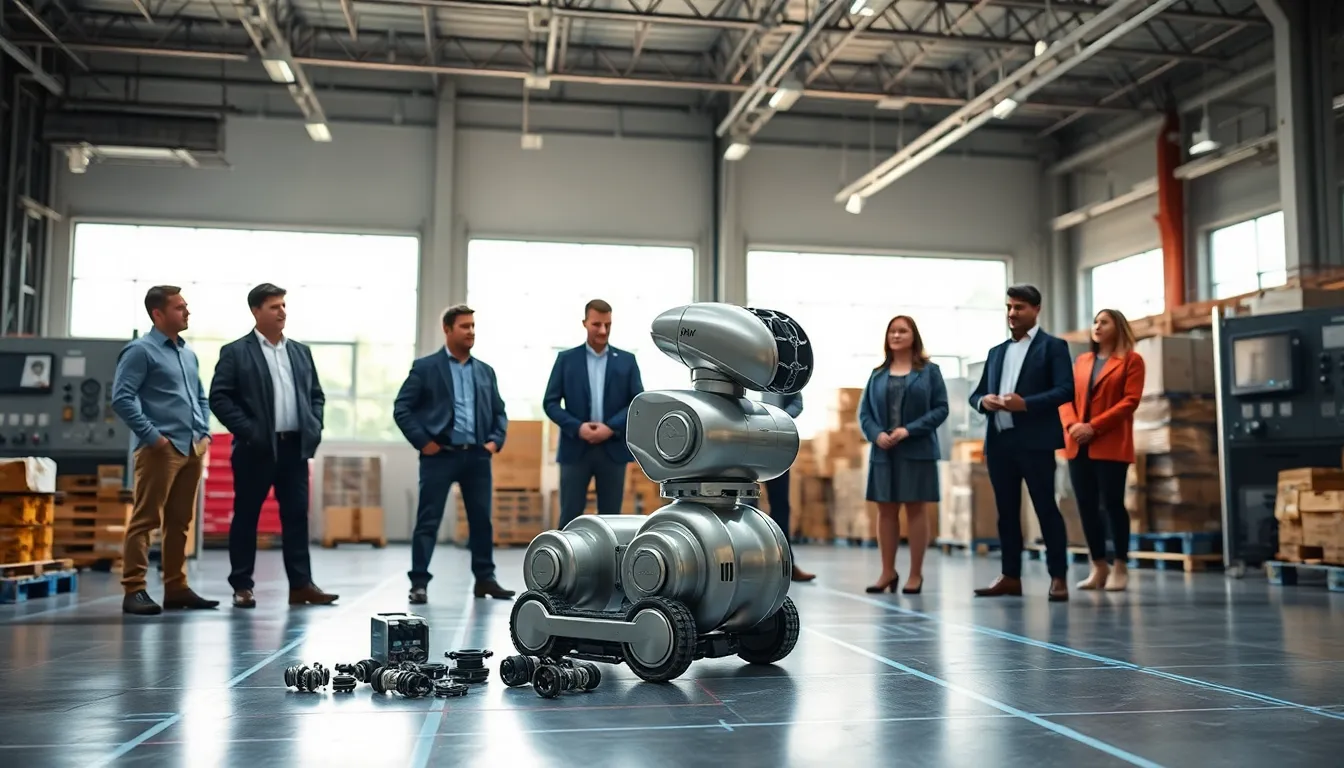In a world where robots are increasingly seen as colleagues rather than competitors, Swap Robotics is making waves with innovative solutions that promise to revolutionize multiple sectors. Imagine a machine that does the heavy lifting while you get to sit back and sip your coffee. Sounds tempting, right? Well, tech enthusiasts and industry leaders alike are keeping their eyes on this exciting wave of transformation. In this text, we’ll explore the intriguing realm of Swap Robotics, what it is, why it matters, and how it’s changing the game across various industries.
Table of Contents
ToggleUnderstanding Swap Robotics

What Is Swap Robotics?
Swap Robotics merges the efficiency of automation with the adaptability of human labor practices. By leveraging sophisticated algorithms and advanced machine learning, this technology offers a flexible and efficient solution for tasks that typically drain human resources. Imagine robots capable of switching roles mid-operation, adjusting their functionalities based on the task requirements, this is the essence of Swap Robotics.
Key Features and Technologies
At the heart of Swap Robotics lies cutting-edge technology. These systems use artificial intelligence for real-time decision-making and can seamlessly interact with other devices, creating an ecosystem where machines communicate fluidly. Key features include:
- Modular Design: This allows robots to swap out components based on specific needs, optimizing performance while saving costs.
- Intelligent Navigation: Equipped with advanced sensors, Swap Robotics can navigate complex environments autonomously, minimizing workplace disruptions.
- Adaptability: They can perform multiple tasks, supporting industries ranging from logistics to agriculture, effectively making them versatile tools in any toolkit.
Applications of Swap Robotics
Industries Utilizing Swap Robotics
The versatility of Swap Robotics means it has made significant inroads across various sectors. Whether in manufacturing, agriculture, or healthcare, organizations are integrating these robots to enhance productivity and efficiency. For instance:
- Manufacturing: Robots assist in assembly lines, ensuring a faster output without compromising quality.
- Healthcare: Here, they can help in transporting medical supplies or even supporting surgical teams by providing real-time data.
- Agriculture: Autonomous machines monitor crop health and assist in planting or harvesting, reducing labor costs significantly.
Benefits of Swap Robotics in Various Sectors
The perks of implementing Swap Robotics are hard to ignore. Industries that adopt this technology have reported:
- Enhanced Efficiency: With machines doing the heavy lifting, tasks are completed faster.
- Cost Reduction: Hiring fewer human workers can lower operational costs while producing the same, if not better, results.
- Improved Accuracy: Robots minimize human error, particularly in repetitive tasks that require precision.
Challenges and Limitations of Swap Robotics
Technological Hurdles
While the advantages of Swap Robotics are shimmering, the path isn’t entirely smooth. Technological challenges abound. For instance, developing a robot that can adjust to various tasks seamlessly requires continuous advancements in artificial intelligence and machine learning. Also, ensuring that these machines can operate safely alongside human workers is a critical concern that needs addressing.
Market Adoption Barriers
It’s not just technology holding back progress. Market adoption presents its own set of challenges. Many companies remain skeptical about initial investments and the long-term returns of implementing such technology. Concerns about job displacement also loom large, with numerous debates about whether robots will complement or replace human labor.
The Future of Swap Robotics
Innovations on the Horizon
The future of Swap Robotics looks promising, with several innovations on the horizon. Integration of more complex AI could lead to smarter robots that require less human intervention. Also, advancements in materials science may produce lighter and more energy-efficient robots, making it easier to carry out these technologies across different industries.
Potential Impact on Workforce and Economy
As the use of Swap Robotics spreads, the labor market will inevitably transform. While some jobs may vanish, a whole new category of positions focused on managing and maintaining these robots will emerge. Economically, a more efficient manufacturing process can lead to decreased prices, enhancing consumer purchasing power.


